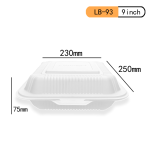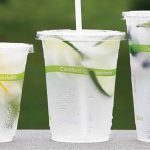Introduction: The Trust Crisis Behind Greenwashing
In an era where sustainable packaging dominates business headlines, the packaging industry finds itself under unprecedented scrutiny. Consumers, regulators, and corporate buyers are all demanding solutions that genuinely reduce environmental impact. Yet, as the term “eco-friendly” becomes overused, trust is eroding.
This is the reality of greenwashing – when brands exaggerate or misrepresent their environmental credentials. While it may win attention in the short term, it ultimately damages reputation and consumer loyalty.
For packaging manufacturers like Xiamen Dashan, which specialises in sustainable packaging solutions such as PLA (Polylactic Acid), RPET (Recycled PET), PET, and PP (Polypropylene), the challenge is clear: sustainability must be backed by science, certification, transparency, and measurable results. A credible sustainable packaging brand is not built through buzzwords, but through action and accountability.


Defining Sustainability: What Does “Green” Really Mean?
The word “green” means little unless it is supported with specific, verifiable claims. In packaging, different materials offer different pathways to sustainability:
-
PLA: Derived from renewable resources like corn starch, it is compostable under industrial conditions but not in home compost. Clear labelling is crucial to avoid consumer confusion.
-
RPET: Made from recycled PET bottles, RPET reduces the need for virgin plastics and helps close the loop. However, recycling rates differ by region, so honest disclosure is essential.
-
PET: Known for its clarity and food safety, PET is recyclable in most markets, but the infrastructure must exist.
-
PP: Lightweight, durable, and recyclable in many systems, PP reduces material usage and transportation emissions.
Brands that define sustainability with precision and transparency gain credibility, while those that rely on vague claims risk being dismissed as greenwashers.



Certification as a Driver of Trust: Third-Party Proof Over Empty Words
Third-party certifications transform marketing claims into verifiable facts. For packaging brands, these include:
-
EN13432 / ASTM D6400 for compostability (PLA cups and trays)
-
Global Recycled Standard (GRS) or ISO 14021 for RPET packaging
-
FSC for responsibly sourced paper packaging
-
BRC, FDA, EU food-contact compliance for food safety assurance
At Dashan, certifications are not optional; they are the foundation of credibility. A PLA coffee cup with EN13432 certification tells buyers it will biodegrade under specified conditions. An RPET fruit container with recycled content certification reassures consumers it truly contributes to the circular economy.
Life Cycle Assessment (LCA): Making Sustainability Evidence-Based
A Life Cycle Assessment (LCA) evaluates the environmental footprint of packaging across its entire lifecycle: raw material sourcing, production, transport, use, and end-of-life.
For example:
-
An RPET beverage cup demonstrates significantly lower greenhouse gas emissions than a virgin PET cup.
-
PLA trays compared to PS (polystyrene) show reduced fossil fuel use and overall carbon footprint.
-
Lightweight PP lunch boxes reduce emissions during shipping by lowering transport weight.
Sharing these findings publicly not only differentiates a brand from competitors but also arms customers with data they can trust.
Supply Chain Transparency: Traceability from Raw Material to Consumer
Transparency is the antidote to greenwashing. Brands must disclose:
-
Where raw materials are sourced
-
How they are processed
-
What recycling or disposal pathways are available
For Dashan, this means clearly stating whether packaging is 100% RPET, made from renewable PLA, or produced with lightweight PP to reduce logistics emissions. QR codes, sourcing maps, or digital platforms can help customers trace the product’s journey.
By embracing supply chain visibility, brands not only earn consumer trust but also comply with emerging global regulations on packaging disclosures.
Measurable Actions: Showing Customers What You’re Doing – and How Much
Commitments must be matched with numbers. For example:
-
“Our RPET lids now use 85% recycled content, cutting virgin plastic use by 120 tonnes annually.”
-
“Switching to lightweight PP trays reduced logistics emissions by 15% in 2024.”
-
“PLA cups replaced 25 tonnes of PS plastics in foodservice applications.”
Concrete results make sustainability progress credible and relatable. Dashan incorporates such metrics in every product line, reinforcing that change is measurable, not aspirational.
Education and Engagement: Turning Consumers into Advocates
Even the most sustainable packaging loses its value if consumers dispose of it incorrectly. That’s why education is vital. Brands must:
-
Provide clear disposal instructions (e.g., “Industrial compost only” for PLA).
-
Use icons and QR codes to explain recyclability.
-
Share blogs and case studies to help businesses and end-users understand the benefits of RPET, PET, PLA, and PP.
This not only reduces contamination in recycling streams but also transforms consumers into active advocates for sustainable practices.
Conclusion: A Sustainable Brand is Built on Trust, Not Buzzwords
Greenwashing erodes consumer confidence, but credibility is built on clarity, certification, evidence, transparency, measurable results, and consumer engagement.
At Xiamen Dashan, sustainability is embedded in every packaging line – from PLA compostable cups, to RPET salad containers, to lightweight PP food boxes. By combining innovation with accountability, we aim not only to meet customer expectations but to exceed them, proving that sustainability in packaging is possible, practical, and trustworthy.
A credible sustainable brand is not created overnight – it is earned, step by step, through integrity, consistency, and action.
📌 References
-
European Commission – Food Contact Materials. https://health.ec.europa.eu/
-
Ellen MacArthur Foundation – Circular Economy and Plastics. https://ellenmacarthurfoundation.org/
-
ASTM International – Compostable Plastics Standard (D6400). https://www.astm.org/
-
European Bioplastics – EN13432 Compostability Standard. https://www.european-bioplastics.org/
-
ScienceDirect – Advances in Sustainable Packaging. https://www.sciencedirect.com/
-
WRAP UK – Plastics and Recycling. https://wrap.org.uk/




